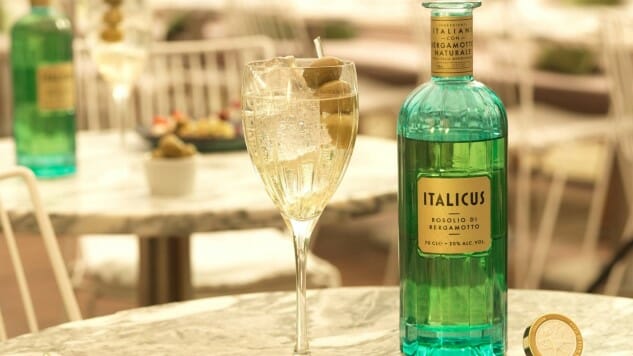Try This Italian Liqueur: Italicus Rosolio di Bergamotto
Photos via Italicus
We’re always down for trying a new cocktail ingredient at Paste, so when I read something about the winner of the “Best New Spirit/Cocktail Ingredient” category at the 2017 Tales of the Cocktail event, I took interest. The annual New Orleans event’s Spirited Awards have been branded as “the Oscars” of their industry for some time, so introducing a popular new spirit or liqueur there is a smart play. If it wins, it immediately announces that new ingredient as a bottle you’re likely to see showing up in cocktail bars in the near future.
This year, that honor went to Italicus Rosolio di Bergamotto, more simply referred to as just “Italicus,” which clocks in at 40 proof / 20% ABV. The new liqueur comes from “Italian spirits expert” Giuseppe Gallo, who claims to have “captured Italy’s art, architecture and poetry in liquid form.” Alright; nothing to live up to with that billing, right?
Italicus is essentially classified as a rosolio, which is a style of liqueur I can’t say I’ve ever sampled before. Traditional rosolios are rather obviously named after the rose petals they incorporate, which give many a pinkish hue. They’re light and on the sweeter side, floral apertifs that are consumed as neat cordials or mixed with lighter liquors/sparkling wines. Italicus takes that basic concept of rosolio and combines it with “the Gallo family’s own Rosolio-making traditions,” which involve the addition of several types of citrus. The final spirit features both citrus and other botanicals: Calabrian bergamot oranges, Sicilian citrons, lavender, roses, chamomile, melissa balm and gentian.
On its own, Italicus is quite fragrant and inviting on the nose; a blend of multiple citrus influences and light herbaceousness—or as a friend put it, “smells like Sprite!” There’s a fairly prominent suggestion of sweetness on the nose, coupled with lemon/lime (which is where the Sprite comparison came from) and the bergamot note you’d expect in Earl Gray tea. There’s also an underlying suggestion of some herbal bitterness to balance things out.
Drinking Italicus neat, the liqueur tastes as it smells: Friendly and inviting, with a big melange of citrus and lightly green, grassy and floral herbaceousness. There is some minimal bitterness that tries to balance things out, but this is a sweeter liqueur first and foremost—you will want to be careful with sugar or simple syrup when using Italicus for mixing. In comparison with some cheap orange curacao I had laying around the house, the Italicus was appreciably more complex, with a greater variety of citrus impressions and much more depth in terms of its other botanicals. It was also somewhat less sweet—but not by much.
Considering this liqueur probably isn’t going to be used by most consumers for neat drinking, though, we decided to mix up a few cocktails and mixed drinks with Italicus.
-

-

-

-

-

-

-

-

-

-

-

-

-

-

-

-

-

-

-

-

-

-

-

-

-

-

-

-

-

-

-

-

-

-

-

-

-

-

-

-








































